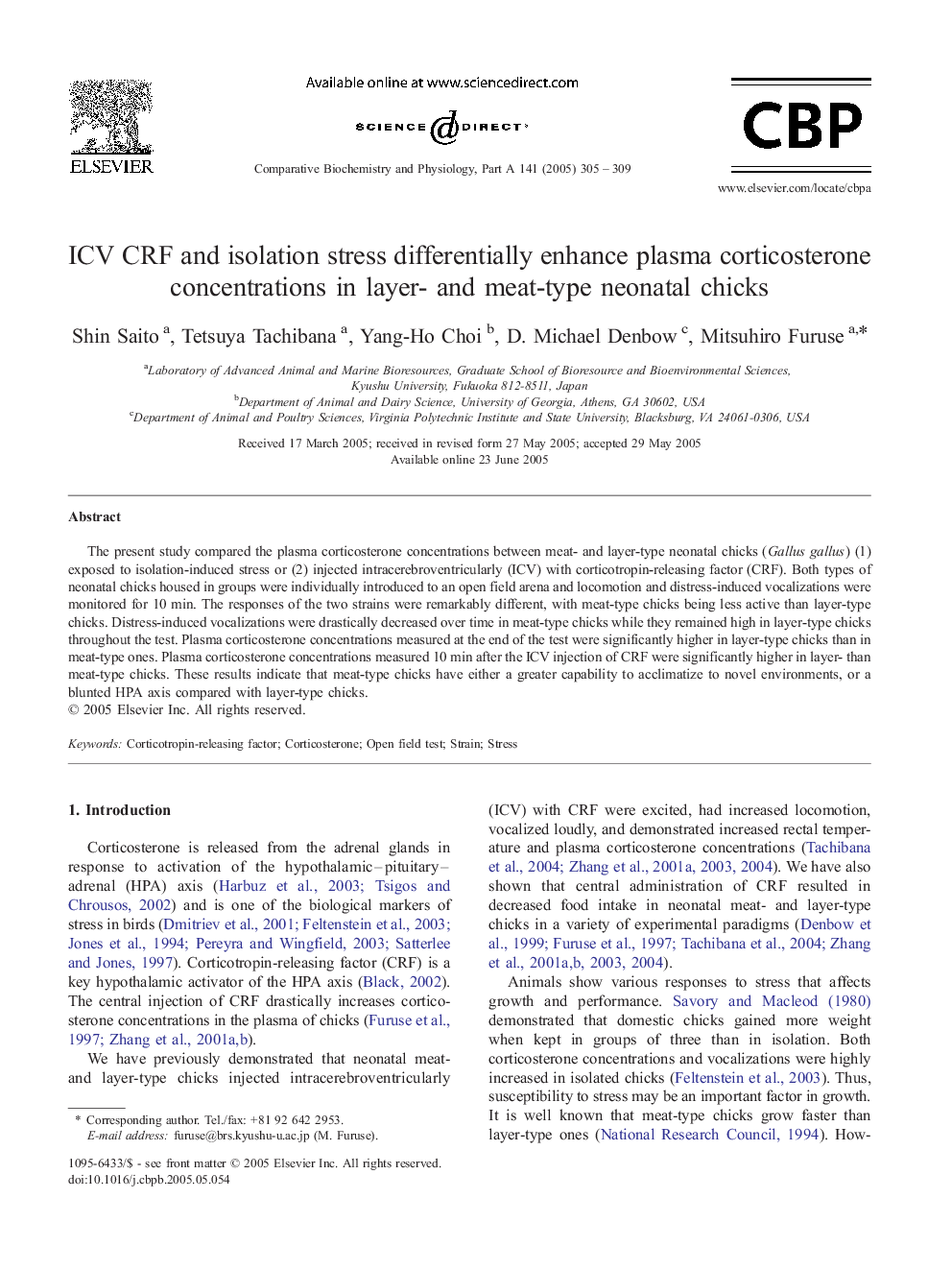| Article ID | Journal | Published Year | Pages | File Type |
|---|---|---|---|---|
| 10819152 | Comparative Biochemistry and Physiology Part A: Molecular & Integrative Physiology | 2005 | 5 Pages |
Abstract
The present study compared the plasma corticosterone concentrations between meat- and layer-type neonatal chicks (Gallus gallus) (1) exposed to isolation-induced stress or (2) injected intracerebroventricularly (ICV) with corticotropin-releasing factor (CRF). Both types of neonatal chicks housed in groups were individually introduced to an open field arena and locomotion and distress-induced vocalizations were monitored for 10 min. The responses of the two strains were remarkably different, with meat-type chicks being less active than layer-type chicks. Distress-induced vocalizations were drastically decreased over time in meat-type chicks while they remained high in layer-type chicks throughout the test. Plasma corticosterone concentrations measured at the end of the test were significantly higher in layer-type chicks than in meat-type ones. Plasma corticosterone concentrations measured 10 min after the ICV injection of CRF were significantly higher in layer- than meat-type chicks. These results indicate that meat-type chicks have either a greater capability to acclimatize to novel environments, or a blunted HPA axis compared with layer-type chicks.
Related Topics
Life Sciences
Biochemistry, Genetics and Molecular Biology
Biochemistry
Authors
Shin Saito, Tetsuya Tachibana, Yang-Ho Choi, D. Michael Denbow, Mitsuhiro Furuse,
